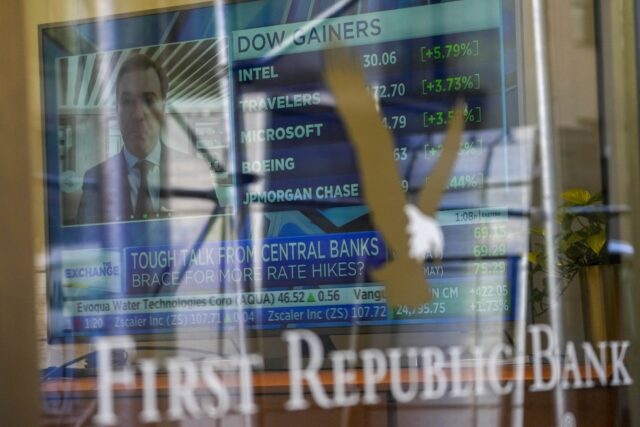First Republic Bank was rescued with $30 billion worth of deposits from 11 banks after it faced a falling stock price and fleeing depositors, the Treasury, Federal Reserve, Federal Deposit Insurance Corp., and the Office of the Comptroller of the Currency said in a joint statement Thursday.
The $30 billion deposit is far more than previous negotiations indicated. According to the Wall Street Journal, “JPMorgan, Citigroup, Bank of America, and Wells Fargo were in earlier talks to deposit $5 billion of their own money each into the lender.” But the final rescue package included 11 banks and $30 billion in capital to prevent the bank from collapsing.
The banks that have come to the rescue are Bank of America, Wells Fargo, Citigroup, and JPMorgan Chase, which will contribute about $5 billion apiece. Goldman Sachs and Morgan Stanley will deposit about $2.5 billion, according to the banks’ press release. Truist, PNC, U.S. Bancorp, State Street, and Bank of New York Mellon will deposit about $1 billion each. The massive deposits are obligated to remain in First Republic for at least 120 days, according to CNBC.
First Republic’s stock, which closed at $115 per share on March 8, traded below $20 at one point Thursday. The stock was halted repeatedly during the session and rose nearly 10% on the day, closing at $34.27 per share.
The bank had said Sunday that it had more than $70 billion in availability liquidity, not counting additional funds it could possibly raise from the Federal Reserve’s Bank Term Funding Program, but that was not enough to keep investors from dumping the stock.
The deposits from the larger banks will add to that liquidity.

COMMENTS
Please let us know if you're having issues with commenting.